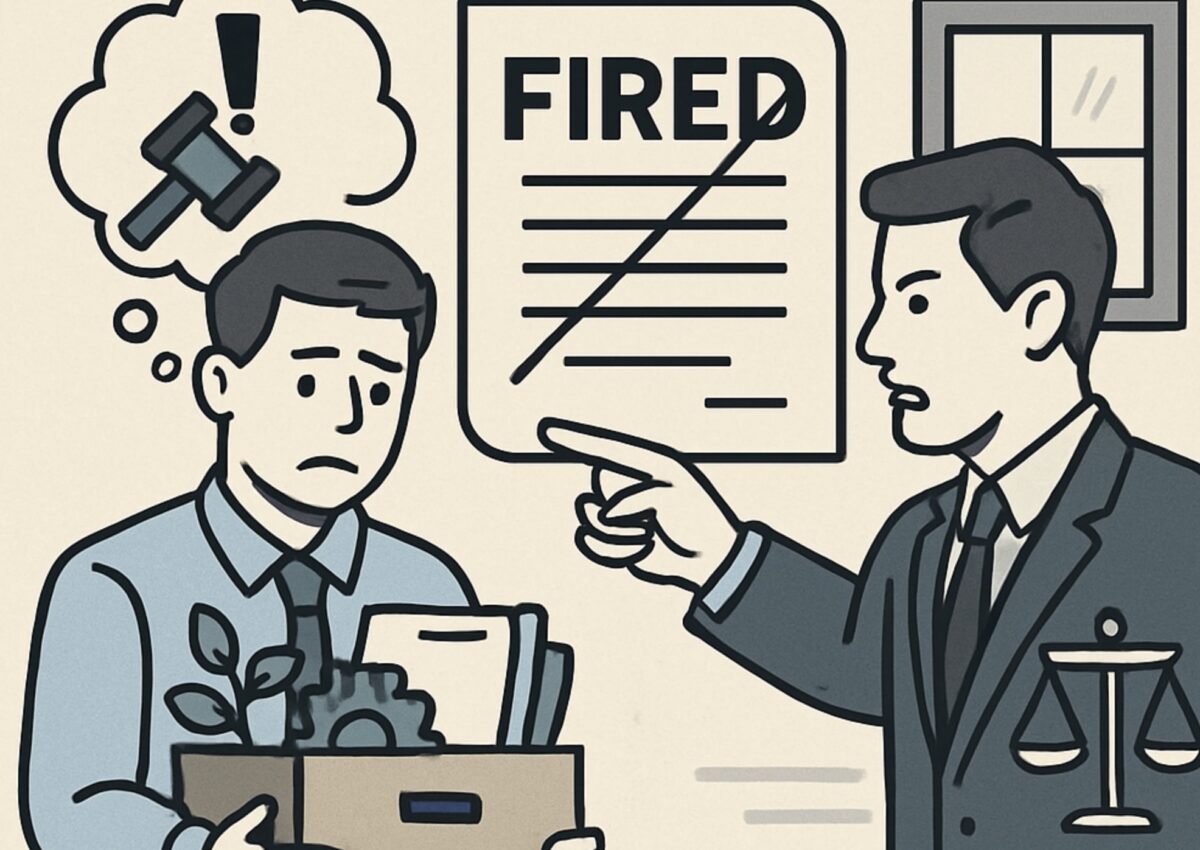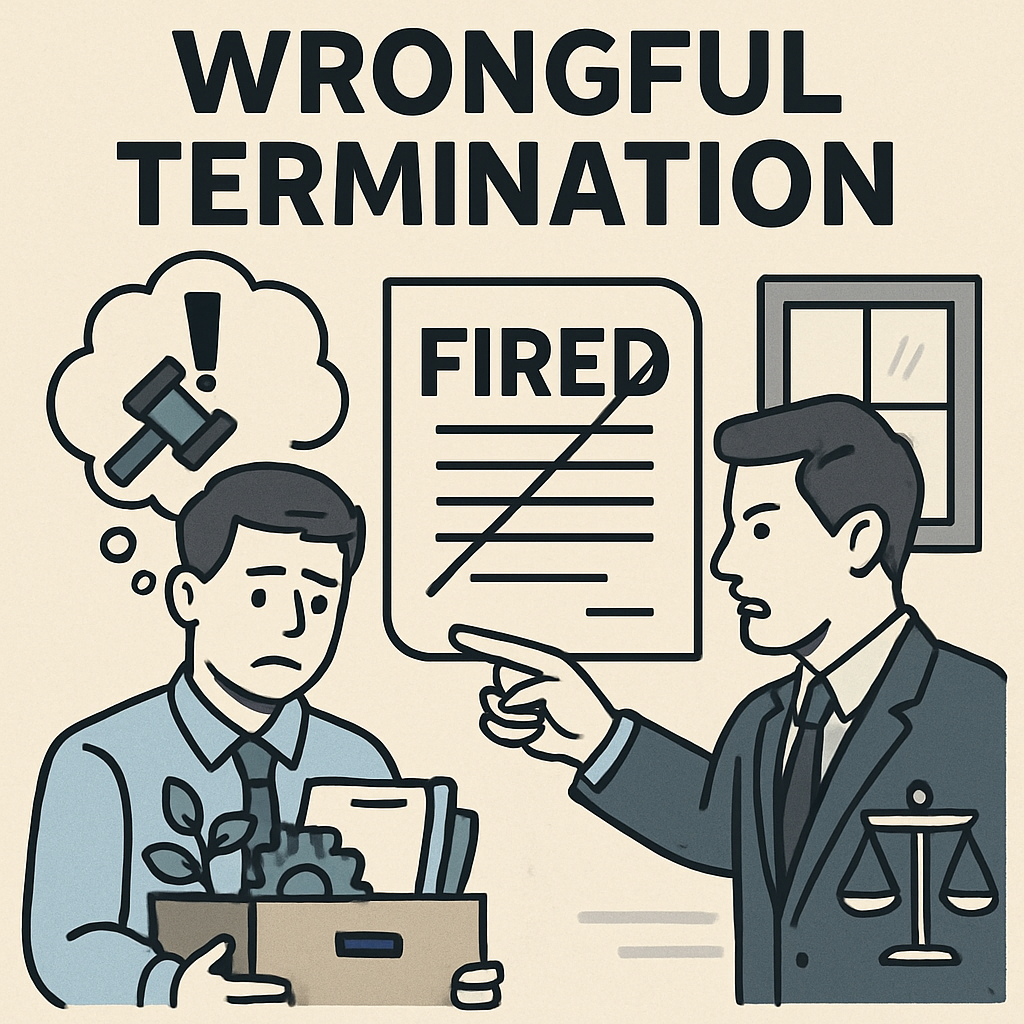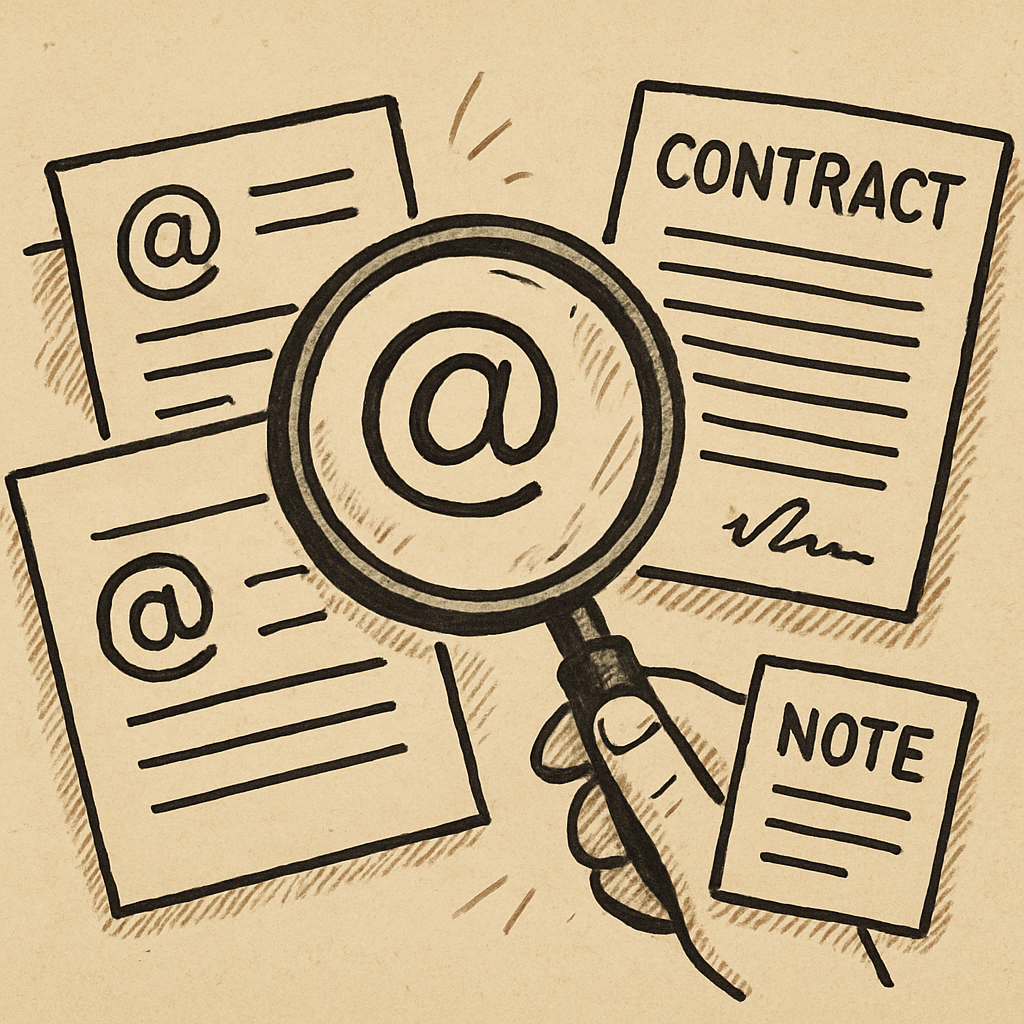
Steps to Take After Wrongful Termination: Protecting Your Employee Rights
Facing wrongful termination can be overwhelming — it disrupts your routine, affects your income, and leaves you uncertain about your next steps. Understanding your legal rights as an employee and taking the right actions early can make a major difference in the outcome.
In this guide, we’ll walk you through what to do after being wrongfully terminated, including how to gather evidence, document communications, and consult an employment lawyer to protect your interests. Whether you were fired without cause or believe discrimination played a role, this article outlines the key steps to help you move forward confidently.
Understanding Wrongful Termination: What It Is and Why It Matters
Wrongful termination occurs when an employee is fired unlawfully. It involves violation of employment laws or breach of contract.
Knowing your rights can be empowering. It helps you recognize if you’ve been a victim of wrongful termination.
Common reasons for wrongful termination include:
- Discrimination based on race, gender, or age
- Retaliation for whistleblowing
- Violation of employment contracts
Recognizing these signs is vital. It determines the steps you should take next.
Understanding wrongful termination is the first step toward resolution. Being informed can help you seek justice confidently.
Immediate Steps to Take After Being Terminated
Experiencing termination can be overwhelming. However, taking immediate action is crucial. Start by staying calm and professional.
Request a termination letter from your employer. It should detail the reasons for your termination. This document is essential for any legal proceedings.
Next, consider reaching out to a trusted colleague. Discuss your situation with them. They might provide insights or witness statements.
Here are immediate steps to follow:
- Request your final paycheck
- Return company property
- Gather contact information of key witnesses
Finally, begin documenting every detail. This includes dates, times, and any relevant communications. Detailed records can strengthen your case significantly. Focus on gathering as much information as possible. This helps ensure you have a solid foundation moving forward.
Documenting Your Termination: Gathering Evidence and Records
Thorough documentation is vital after termination. Begin by collecting all pertinent records. These may include employment contracts, emails, and performance reviews.
Compile any text messages related to your work. Save copies of any meeting notes. This information can substantiate your claims.
If possible, obtain statements from coworkers. They can serve as witnesses to your performance or any discriminatory practices. Every piece of evidence adds strength to your case.
Here’s a quick checklist for what to gather:
- Employment contracts and policy manuals
- Emails and text messages
- Performance reviews
- Witness statements
Keep evidence organized in a secure location. This will help if you need them for legal proceedings. Organized documentation ensures that you’re well-prepared. This can significantly increase your chances for a favorable resolution.
Reviewing Your Employment Contract and Company Policies
Start by examining your employment contract. It may outline specific termination procedures. Identify any clauses your employer might have violated.
Next, review the company’s policies. Focus on any related to termination or discrimination. Check if they were followed in your case.
Having a solid understanding of these documents is crucial. It allows you to identify potential breaches. This can bolster your claim of wrongful termination.
Here’s what to look for:
- Termination procedures
- Anti-discrimination policies
- Any clauses specific to your role
Identifying Signs of Wrongful Termination
Recognizing signs of wrongful termination is key. Was your termination sudden or unexpected? This could indicate unlawful conduct by your employer.
Examine if discrimination played a role. Were you terminated due to race, age, or other protected attributes? If so, this may constitute wrongful termination.
Additionally, consider any recent complaints or conflicts. Were you vocal about workplace safety or unfair practices? Retaliation for voicing concerns is a common sign of wrongful termination.
Possible Indicators to Watch For:
- Unjust reasons for termination
- Discrimination or bias
- Retaliation for complaints
Consulting a Wrongful Termination Attorney Near You
Seeking legal guidance is a wise step when faced with wrongful termination. Consulting a local attorney can provide clarity on your rights and options. A knowledgeable lawyer will evaluate the validity of your case and recommend the best course of action.
Conduct thorough research to find an experienced attorney. Look for wrongful termination attorneys near you who specialize in employment law. Online reviews and recommendations from others can help you identify qualified legal experts.
During your consultation, prepare to discuss all relevant details. Be open about your situation and bring any documentation you have gathered. Your attorney will need this to assess your case effectively.
Consider the Following When Choosing Your Attorney:
- Experience in employment law
- Positive client reviews
- Clear communication

A strong attorney-client relationship is crucial. Trust is important as you navigate this challenging situation.
Filing a Complaint with the EEOC or State Agency
Filing a complaint with the Equal Employment Opportunity Commission (EEOC) or a state agency is a critical step in many wrongful termination cases. This formal process investigates claims of illegal job termination practices. It’s essential to understand the timeline and requirements, as they can vary by location.
Before filing, gather all necessary documentation, such as evidence of discrimination or unfair treatment. This strengthens your case and provides the agency with relevant information. Ensure you file within the statute of limitations, which is generally 180 days but can be longer in some states.
Key Steps When Filing a Complaint:
- Gather evidence of wrongful termination
- Submit documentation to the EEOC or state agency
- Follow up on the status of your complaint
This process can be intricate, so having a supportive legal counsel can help guide you through it. Engaging with a wrongful termination lawyer near you may streamline filing and improve your chances of success.
Understanding the Legal Process: What to Expect
Navigating the legal process after a wrongful termination can seem daunting. Understanding each stage helps you stay prepared and informed. It’s not just about paperwork and hearings; it’s about knowing your rights and having a clear strategy.
The journey often begins with a consultation with a wrongful termination lawyer. They will evaluate your case, advise on potential outcomes, and explore negotiation possibilities with your employer. At this point, establishing an attorney-client relationship is vital, as it ensures confidentiality and tailored advice.
Should negotiations fail, litigation becomes a reality. The process may involve filing a formal complaint, going through discovery, and possibly attending court hearings. This phase requires meticulous preparation and a solid legal strategy.
Key Stages in the Legal Process:
- Initial consultation with a lawyer
- Filing the legal complaint
- Discovery and evidence gathering
- Negotiation or trial readiness

Through each step, maintaining a positive outlook and collaborating with your legal team are crucial. This not only strengthens your case but also helps mitigate stress. Remember, professional guidance plays a key role in navigating these complex proceedings successfully.
Calculating Damages and Potential Compensation
When pursuing a wrongful termination case, understanding potential damages is essential. Compensation aims to make you whole by covering lost wages and other harm. Both tangible and intangible losses can be claimed.
Calculating damages often involves examining your salary, benefits, and job perks. Benefits like health insurance and retirement contributions matter too. The goal is to quantify financial losses precisely, reflecting the true impact of the termination.
Potential Compensation Elements:
- Lost wages and benefits
- Emotional distress compensation
- Punitive damages for misconduct
Evaluating these damages requires thorough financial analysis and sometimes expert input. Engaging experienced wrongful termination lawyers can help ensure you pursue the maximum compensation available under the law.
Preparing for Settlement or Litigation
Navigating settlement discussions and litigation requires preparation. Understanding the process helps in making informed decisions. Both paths offer opportunities and challenges to consider.
In settlement, parties aim to resolve the matter out of court. This could involve financial compensation or reinstatement. Settlement often saves time and resources compared to a court battle.
Key Considerations:
- Evaluating settlement offers
- Anticipating litigation costs
- Planning a strategic legal approach
For litigation, be ready for a longer process. This includes court appearances and possible public exposure. A clear legal strategy, aided by your wrongful termination lawyer, increases the likelihood of a favorable outcome.
Protecting Your Rights and Reputation During the Process
Safeguard your rights to maintain professional dignity during the termination process. Stay calm and avoid inflammatory comments. Protecting your reputation is vital for future employment.
Strategies to Consider:
- Maintain professionalism in all interactions
- Avoid negative social media posts
- Consult your attorney before making public statements
These steps help preserve your image while pursuing justice.
Emotional and Career Support After Wrongful Termination
Facing wrongful termination can be emotionally taxing. Seeking support is crucial. Connect with friends, family, or support groups for guidance and encouragement.
Ways to Get Support:
- Join a professional support group
- Seek counseling services
- Connect with professional networks
These resources offer both emotional relief and career opportunities. Building a supportive community helps you navigate this challenging time.
Frequently Asked Questions About Wrongful Termination
When dealing with wrongful termination, it’s natural to have questions. Understanding your rights can help you take informed steps. Here are common queries:
Common Questions:
- What is wrongful termination?
It occurs when an employee is fired for illegal reasons, such as discrimination or retaliation. - How do I prove wrongful termination?
Gather evidence such as emails, witness statements, and performance reviews. - Should I hire a lawyer?
Consulting a wrongful termination lawyer can help in navigating the legal process and strengthening your case. - What compensation am I entitled to?
This can include lost wages, benefits, and sometimes punitive damages, depending on the case.
Understanding these aspects can make the journey smoother and informed. Make sure to seek professional advice where necessary.
Conclusion: Moving Forward After Wrongful Termination
Experiencing wrongful termination can be daunting, yet understanding your rights is empowering. Taking timely and informed steps can lead to a favorable outcome.
Remember, seeking legal help from a wrongful termination attorney can aid in protecting your rights. Stay proactive in managing your career path while navigating through legal processes. With clear steps, you can face challenges head-on and secure a brighter future.





